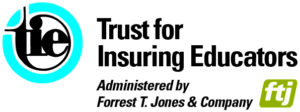March 16-19
Contact2024 NPS Background Materials
Home /BACKGROUND MATERIALS
Key House Committees
Key Senate Committees
White House
Department of Education
Background
Congress operates under a fiscal year that runs from October 1 – September 30. The federal budget process usually begins each February when the president submits the Administration’s budget request to Congress. This request is not binding, but it serves to outline the Administration’s funding priorities for the coming fiscal year and Congress may use it as a blueprint in crafting its own budget.
The House and Senate Budget Committees are responsible for developing the congressional budget. These committees study the president’s proposals, along with requests from other committees and Members of Congress and put together their own “budget resolution.” The budget resolution sets a “spending ceiling” for each broad budget category. There are 17 major categories for which the Budget Committees recommend spending ceilings. CTE and workforce development programs are part of the category known as “Function 500 – Education, Training, Employment, and Social Services.” The budget resolution has no binding authority over specific program funding levels, but the higher the total funding levels in the budget resolution, the higher the likelihood of increases for programs such as Perkins, HEA, WIOA and ESSA.
Once the budget resolution has been agreed upon and passed by both chambers of Congress, the House and Senate Appropriations Committees begin the work of setting specific funding levels for individual programs, including Perkins, through appropriations bills. The 12 annual appropriations bills are designated to subcommittees within the appropriations committees. Funding decisions concerning CTE, other education programs and workforce development are made in the House and Senate Appropriations Subcommittees on Labor, Health and Human Services, Education, and Related Agencies.
If approved at the committee level, the funding bills are then considered by the full House and Senate, with any differences between the two versions reconciled by a conference committee. Often many of the larger and more controversial appropriations bills are not completed on time, and Congress must pass a “continuing resolution” (CR) to continue program funding at current levels until a new appropriations bill can be passed.
Current Status
Congress has been operating on a CR since the fiscal year ended on September 30. Since the first threat of a government shutdown, Congress has passed several continuing resolutions keeping government open.
When Speaker Mike Johnson (R-LA) took the gavel in October, he proposed a new approach to keeping the government open, the laddered CR. Under the laddered approach, funding has been broken up into two deadlines. The first deadline has included the funding bills that have historically been considered “noncontroversial.” The second deadline includes everything else, including the Department of Education, which is under the jurisdiction of the House and Seante Subcommittees on Labor, Health and Human Services, Education and Related Agencies appropriations bills. The bills funding these departments often times contain many controversial policy riders. The current funding deadlines are March 8 for the first six bills, and March 22 for the remaining six bills.
Recently, appropriators have agreed to both the funding levels for the entire Federal Government and the department allocations. Lawmakers are currently working on turning those agreements into legislative text, so we currently do not know the overall funding level for the Perkins Basic State Grant.
It is not yet known if those agreements will turn into a bill that will pass both chambers. Members of the House Freedom Caucus are advocating for a shutdown because funding levels have not been cut by a significant amount yet. This opposition could be enough to derail the entire process, and we will need to wait and see how Congressional leadership decides to move forward.
Resources
Check out these general resources to learn more about the federal funding process:
- ACTE Fiscal Year 2024 Funding Priorities
- CTE Policy Watch Blog: Federal Funding Posts
- CRS Report: Introduction to the Federal Budget Process
- Fiscal Year 2023 State Allocations
- Upcoming Congressional Fiscal Policy Deadlines
- Policy Basics: Non-Defense Discretionary Programs
- Appropriations Watch: FY2024
- Coalition for Education Funding’s FY 24 Budget Book
- CRS: Appropriations Status Table: FY2024
Short-term Pell Grants
Background
The Pell Grant was established in the Higher Education Act of 1965 to expand access to four-year colleges for students who may not otherwise be able to afford a postsecondary education. While the program has since been expanded to other postsecondary opportunities such as associate degrees and some certificates, shorter-term programs under 600 clock hours are not covered by Pell. These programs offer in-demand certifications, skills and credentials that can lead to better wages and career prospects. Additionally, these short-term programs play a critical role in narrowing the nation’s skills gap so that employers can find workers who possess the qualifications and training needed to fill these in-demand positions.
The primary bipartisan legislation to expand Pell grant eligibility to short-term programs is the JOBS Act, which has been re-introduced and negotiated every Congress since 2014. While this legislation has yet to pass, it has gained broad bipartisan support through careful negotiation. ACTE has publicly supported this bill and actively advocates for its passage.
In addition to the JOBS Act, there have been a number of other bills introduced to address expanding Pell to short-term programs. Reps. Elise Stefanik (R-NY), Mark DeSaulnier (D-CA), Virginia Foxx (R-NC) and Bobby Scott (D-VA) introduced the Bipartisan Workforce Pell Act in December 2023. In this bill, state workforce boards, accreditors and the Department of Education (ED) would determine whether programs would be eligible for Workforce Pell Grants, including by verifying whether they provide a return on investment for students. Also, ED would have to verify that programs maintain completion and job placement rates of at least 70 percent. Short-term programs would also have to show state workforce boards that they provide education for high-skill, high-wage or in-demand occupations.
Current Status
The JOBS Act (S. 161/H.R. 793) was re-introduced in February of 2023 and remains the most widely supported and bipartisan legislation for short-term Pell expansion.
However, the Bipartisan Workforce Pell Act (H.R. 6585) is the bill that is currently moving through Congress. In December, the House Education and Workforce Committee took up the bill, and it passed out of committee in a bipartisan 37-8 vote. The Members of Congress who voted against the bill cited the provision that allows for-profit institutions to have eligibility as the main reason for their opposition. While the timeline is unclear, it is expected that the full House of Representatives will take this bill up soon, and it is expected that this bill can pass the House.
Resources
- Press Release: Stefanik, Scott, Foxx, DeSaulnier Legislation Tackles Workforce Gaps
- Press Release: Kaine & Braun Introduce Bipartisan Bill to Help More Americans Access High-quality Job Training, Get Good-Paying Jobs
- Press Release: Rep. Bill Johnson Introduces JOBS Act Legislation to Address Job Shortages
- ACTE Short Term Pell Infographic
Higher Education Act
Background
The Higher Education Act (HEA) was first passed in 1965 and serves as the governing federal legislation for most postsecondary education issues. This law administers most of federal student aid, addresses teacher preparation and recruitment, collects data on colleges and universities, and enforces laws around privacy and civil rights. HEA was last reauthorized in 2008, making it long overdue for an update. The 2008 reauthorization made changes in student loan discharges for disabled people, combating copyright abuse, cost transparency, and other policies.
There have been numerous attempts to reauthorize HEA in recent years, however, none have come to any fruition. Given skyrocketing national student debt, both parties have sought to make proposals that address college affordability in different ways. Most recently, House Republicans introduced the College Cost Reduction Act (H.R. 6951). The main purpose of this bill is to address the rising cost of college and student loan debt, but this bill also provides Postsecondary Student Success Grants and eases requirements for students to transfer credits.
Current Status
Currently, there is little to no hope of an HEA reauthorization in 2024 due to a lack of bipartisan consensus and competing priorities. That said, some Democratic members have introduced more piecemeal legislation that would reauthorize individual titles of HEA. For example, Sen. Jack Reed (D-RI) and Rep. Alma Adams (D-NC) re-introduced the EDUCATORS for America Act (S. 1341 /H.R. 2992) last year to attempt to reauthorize Title II of HEA, which addresses educator quality, recruitment, and retention.
Resources
Higher Education Act 101 Video
CRS Report: The Higher Education Act: A Primer
ACTE Policy Recommendations
CTE Policy Watch Blog: HEA Blogs
Apprenticeships
Background
The National Apprenticeship Act (NAA) is a federal law that authorizes registered apprenticeship programs.
Apprentice programs in the U.S. were largely unregulated until 1934. After passage of the National Industrial Recovery Act (NIRA), industry, trade unions and the National Recovery Administration cooperated to fashion various “industry codes” to govern competition, wages, working conditions and quality of products and services.
In 1937, the Congress passed the National Apprenticeship Act, also known as “the Fitzgerald Act.” The Act established a national advisory committee whose task was to research and draft regulations to establish minimum standards for apprenticeship programs. The Act was later amended to permit the United States Department of Labor to issue regulations protecting the health, safety and general welfare of apprentices, and to encourage the use of contracts in the hiring and employment of them. The National Apprenticeship Act is administered by the Employment and Training Administration in the Department of Labor, but the underlying statute has not been significantly updated in years.
Current Status
A reauthorization of the bill is currently making its way through Congress. Sens. Tammy Baldwin (D-WI) and Lisa Murkowski (R-AK) introduced S.2122, the National Apprenticeship Act of 2023, last year. This bill would provide resources for small- and medium-sized employers to develop their own apprenticeship programs, create rural demonstration grants for low-density areas with labor shortages, streamline the apprenticeship application process and provide resources for program sponsors to attract participants with employment and populations that have not-traditionally enrolled in apprenticeship programs.
The Senate Committee on Health, Education, Labor and Pensions scheduled a markup for this bill last summer, but it was cancelled at the last minute. No further action has been taken on this bill.
There has also been significant attention from the Administration on apprenticeships, with new regulations being proposed in January in absence of a congressional reauthorization. We will be responding to these regulations soon.
Additional Resources
- Bill Text: The National Apprenticeship Act of 2023
- Press Release: Baldwin, Murkowski Introduce Bill to Modernize and Expand Apprenticeships Programs to Meet 21st Century Workforce Needs
- Additional Summary of The National Apprenticeship Act of 2023
- National Governors Association Report – Advancing Apprenticeship: Opportunities for States and Business to Create and Expand Registered Apprenticeship Programs
- Summary of Hearing on Skills-Based Learning
- ACTE Policy Watch: Vice President Harris Delivers Remarks for National Apprenticeship Week
WIOA
Background
The Workforce Innovation and Opportunity Act (WIOA) is the primary federal legislation governing federal workforce development programs. It is designed to help job seekers access employment, education, training, and support services to succeed in the labor market and to match employers with the skilled workers they need to compete in the global economy. The latest reauthorization, signed into law in 2014, emphasized an increased coordination and cohesion among federal workforce development programs, including Perkins, instead of them working independent of one another. They accomplished this by aligning the language of definitions, requiring that postsecondary CTE institutions be a local infrastructure partner, and giving states the option to do a combined state plan that meets the planning requirements for WIOA’s core programs and at least one other federal program, among others. WIOA superseded the Workforce Investment Act of 1998 and amended the Adult Education and Family Literacy Act, the Wagner-Peyser Act, and the Rehabilitation Act of 1973.
Current Status
Programs under WIOA are authorized through FY 2020, which means they expired starting October 1, 2020, although they remain funded through the appropriations process. Both parties in Congress have acknowledged the importance of WIOA programs and expressed desire to reauthorize the legislation. Late last year, Education and the Workforce Committee Chairwoman Virginia Foxx (R-NC) and Ranking Bobby Scott (D-VA) introduced H.R. 6655, A Stronger Workforce for America Act. The bill would comprehensively reauthorize WIOA and make significant changes to core aspects including eligible training providers lists.
Specifically, this bill requires that 50% of the adult and dislocated worker funding toward upskilling workers through individual training accounts (ITAs), streamlines the eligible training provider list requirements to focus on outcomes and ensure eligible programs are aligned with the skill and hiring demands of employers, establishes a demonstration authority to provide several states and local workforce boards the flexibility to reimagine their workforce system, and facilitates skills-based hiring by validating workers’ competencies gained through prior experience and authorizing state and local boards to provide technical assistance to employers on implementing skills-based hiring practices.
On December 12, the House Education and Workforce Committee took this bill up and approved the legislation in a bipartisan 44-1 vote. The bill is awaiting a vote by the full House of Representatives.
Currently, no comprehensive WIOA reauthorization has been released in the Senate, but discussions are underway.
Additional Resources
- Aligned by Design: WIOA and CTE
- CRS Report: The Workforce Innovation and Opportunity Act and the One-Stop Delivery System
- Employment & Training Administration: WIOA Overview
- CTE Policy Watch Blog: WIOA Blogs
- Bill Text: A Stronger Workforce for America Act
- Press Release: @EdWorkforceCmte Leaders Introduce Bipartisan Bill to Strengthen America’s Workforce
- Additional Summary of A Stronger Workforce for America Act
- CRS Report on A Stronger Workforce for America Act
Background
Throughout the country, K-12 schools have been reporting concerning levels of staff shortages across virtually every subject area, including and especially CTE. While the pandemic certainly exacerbated this issue, the root causes of the national teacher shortage are longstanding and systemic. In many schools, low teacher pay makes it difficult to recruit and retain staff; however, this is particularly challenging for CTE teachers who can often make two to three times more money working directly in the industries they teach. Further, problems such as teacher licensure, limited school resources and difficult working conditions have caused many teachers to consider leaving the classroom or may prevent prospective teachers from entering the classroom at all. While these shortages are widespread, they impact low-income, rural and communities of color at disproportionate rates.
The federal government plays a very limited role in the K-12 education system, but there is still significant opportunity to affect change. The Biden-Harris Administration has focused on alleviating teacher shortages in recent years by leveraging public-private partnerships, encouraging the registration of teacher residency programs as apprenticeships with the Department of Labor, and proposing additional funding to federal programs such as the Teacher Quality Partnership Grant, the Hawkins Centers for Excellence, and Every Student Succeeds Act Title I grants to local education agencies.
So far, the focus on teacher shortages in Congress has been sparser. Unlike in 2022, where many congressional committees held hearings examining the teacher shortage crisis, there has not been much action at the committee level this Congress. ACTE has endorsed a number of teacher workforce bills: the RAISE Act, the RETAIN Act and the Loan Forgiveness for Educators Act most notably. Both the RAISE Act and RETAIN Act would provide a federal income tax credit for all public K-12 teachers. The Loan Forgiveness for Educators Act would extend the Teacher Loan Forgiveness program to all teacher subjects. None of these bills have received any actions with their relevant committees.
Importantly, neither Congress nor the Biden-Harris Administration have proposed many solutions for the postsecondary CTE faculty shortage. These shortages are widespread, however, there is no federally collected data to measure them. Postsecondary CTE faculty shortages can lead to program closures, which exacerbate workforce shortages and lead to decreased opportunities for learners.
Current Status
While the Senate Health, Education, Labor and Pensions Committee has made increasing teacher pay its key focus area in 2022, Chairman Bernie Sanders (I-VT) has changed his focus for 2023 and 2024. Lawmakers reintroduced the Loan Forgiveness for Educators Act in late March 2023, while the RAISE Act and RETAIN Acts were both introduced in May 2023. These bills do not have any Republican co-sponsors, and they are unlikely to gain bipartisan support. Ultimately, these bills are not expected to become law.
The Biden Administration has continued to propose robust funding for federal programs that support the recruitment, retention and development of educators. Recently, the Administration unveiled a new public service announcement elevating the teaching profession. The campaign titled “Teachers: Leaders Shaping Lives” was developed in partnership with TEACH.org and One Million Teachers of Color. The goal is to inspire more talented people, especially those from underrepresented communities—to become teachers, while also elevating the teaching profession and celebrating our teachers.
ACTE’s detailed legislative priorities in this area can be found here.
Resources
- Press Release: Congressman Schiff, Senator Booker Introduce Legislation to Boost Teacher Compensation
- Bill Text: RAISE Act of 2023
- Press Release: Schnieder, Durbin Stevens Introduce RETAIN Act to Support Teachers During Teacher Appreciation Week
- Bill Text: RETAIN Act
- One Pager: Loan Forgiveness for Educators Act of 2023
- Bill Text: Loan Forgiveness for Educators Act of 2023
- Department of Education: Raise the Bar Policy Brief
- Inside Higher Education: Two-year colleges strain to hire instructors in technical fields
- ACTE Policy Watch Blog; Analysis of National Data Illustrates CTE Teacher Shortages


